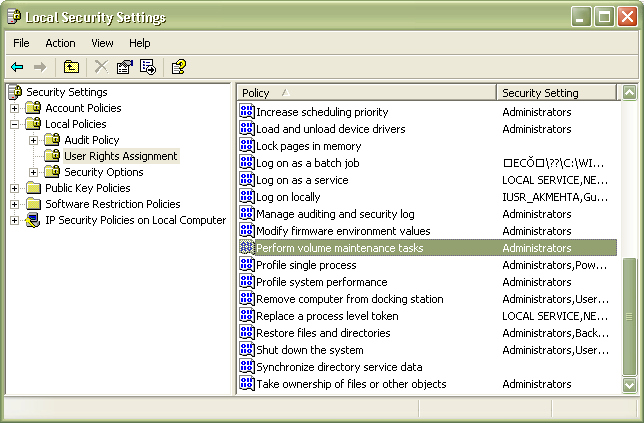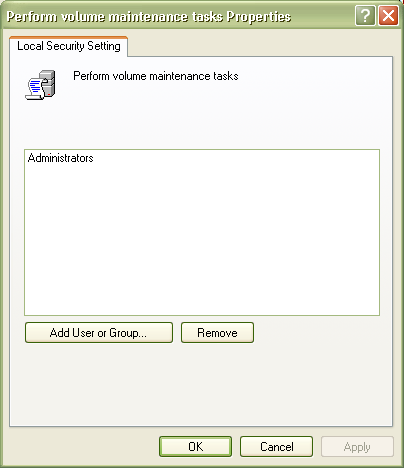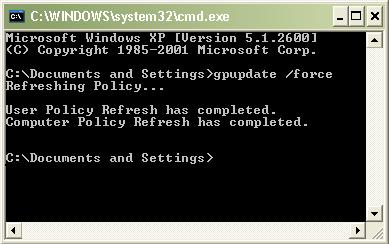Introduction
SQL Server Database Administrators can leverage Database Instance File Initialization Feature which is available in Microsoft Windows XP Professional, Windows Server 2003 or later versions to reduce the time taken to restore very large [gs database]s.
The Database Instance File Initialization feature internally skips zeroing out of data pages thereby reducing the time taken when performing operations such as creation of new [gs database]s, adding new data or [gs log] [gs file]s to an existing database, increasing the size of an existing data and log files (including database file auto grow operations) or restoring a database or a [gs filegroup].
Using Database Instant File Initialization Feature
The Database Instant File Initialization feature can be used by SQL Server 2005 or later versions only when the SQL Server service [gs account] is granted SE_MANAGE_VOLUME_NAME privilege.
Windows administrators can provide SE_MANAGE_VOLUME_NAME privileges to an SQL Server Service Account by adding it to Perform Volume Maintenance Tasks [gs security] [gs policy].
Enabling Database Instant File Initialization Feature of SQL Server
Click Start > Control Panel > Administrative Tools > Local Security Policy.
In Local Security Policy window, expand Security Settings and then expand Local Policies.
In Local Policies, expand User Rights Assignment folder. All the [gs user] specific policies will be displayed on the right side panel.
In the right panel, double click Perform Volume Maintenance Tasks;
This will open up Perform Volume Maintenance Tasks Properties window as shown in the below snippet.
On the Local Security Setting tab, click Add User or Groups… button, this will open up Select Users or Groups dialog box where you need to add the SQL Server Service Account and then click OK to exit the Select Users or Groups dialog box.
Click OK to exit the Perform Volume Maintenance Tasks Properties window.
Finally click Start > Run and type the following command gpupdate /force to apply the modification in the security policy immediately as shown in the snippet below.
Conclusion
In this article you have seen how SQL Server Database Administrators can leverage Database Instance File Initialization Feature which is available in Microsoft Windows XP, Windows Server 2003 or later versions to reduce the time taken to restore very large [gs database]s.
SOURCE | LINK | LANGUAGE | ENGLISH |





Hey dude, did you know? Configuring Database Instant File Initialization feature (SQL Server) – http://heelpbook.altervista.org/?p=35064 (Visit us on http://www.heelpbook.net) – Enjoy!
Configuring Database Instant File Initialization feature (SQL Server) http://heelpbook.altervista.org/2012/configuring-database-instant-file-initialization-feature-sql-server/ via @HeelpBook